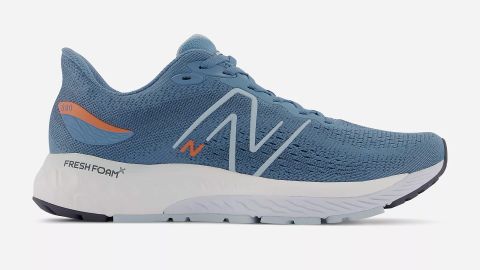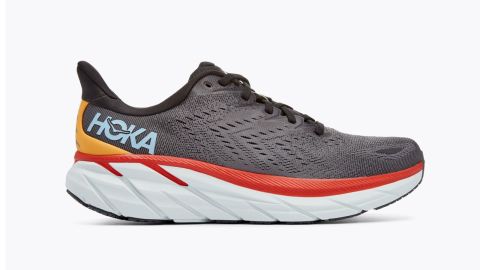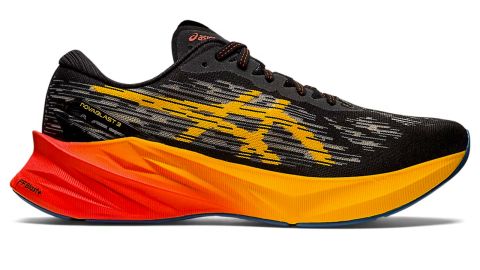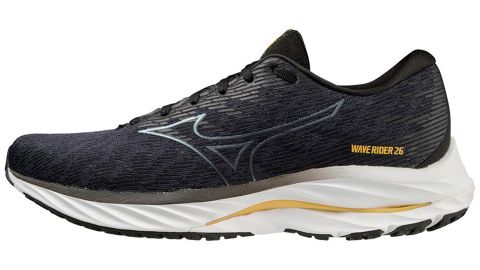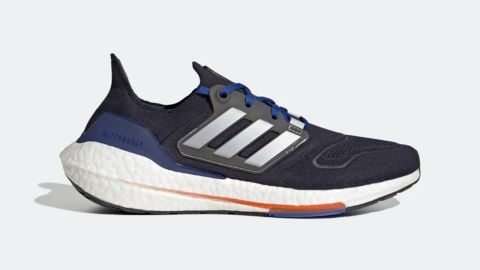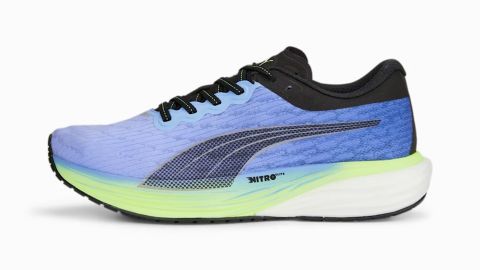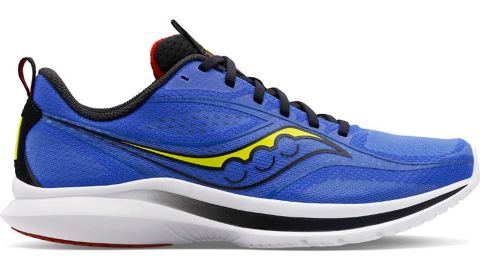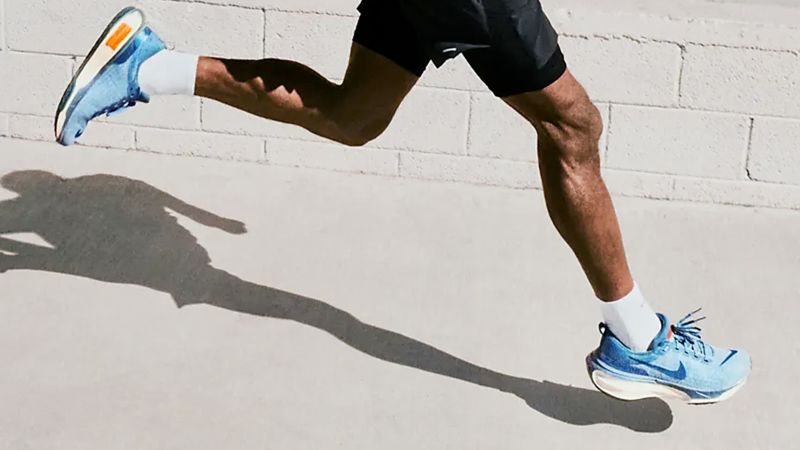
Running shoes are built around something called a “last,” which is simply a mechanical form shaped like a human foot. And most brands use molds based off a man’s foot, no matter what gender the shoe is meant for. Translation: Male runners have their pick of the litter when it comes to choosing running shoes.
That said, most runners (male or female) want to avoid trendy shoes marketed for racing — unless, of course, you’re buying them for a race — and stick to daily trainers. These shoes are meant to be versatile, and can handle short and long runs done at an easy to moderate pace. Generally, daily trainers have lots of cushioning and are designed using slightly heavier materials for durability. That’s because these are the shoes you’re going to run most of your miles in.
We asked experts about their favorite choices, and though some of their picks may not be the lightest shoes on the market or have the latest technology, these more versatile running shoes for men will let you pick up the pace when needed — and while offering supportive features that will, ideally keep your training injury-free.
Best for power
A classic fan favorite, the New Balance 880 is now on its twelfth version. “The heel is softer (and arguably, more comfortable) than previous models, while the forefoot is composed of more dense foam, resulting in greater propulsive energy during toe-off. Furthermore, the upper provides ample ventilation, while the rubber outsole has excellent traction and durability,” says Rami Hashish, Ph.D., DPT, Body Performance & Injury Expert.
Best for support
HOKA is known for maximal cushioning, which makes them a workhorse of a shoe that can handle tons of miles without beating up your legs (they have the American Podiatric Medical Association Seal of Acceptance). “The combination of the lightweight structure of the shoe along with the firm insole that Hoka is so well known for makes the Hoka Clifton 8 a great choice,” says Matt Tanneberg, a chiropractor and certified strength and conditioning specialist in Scottsdale, AZ who works with USA Track & Field athletes. “For a neutral shoe, it still provides ample support, which is why I recommended it to the majority of my runners.”
Best for sprinting
The third generation of ASICS’ Novablast, a lightweight, cushioned trainer, only improves on the original; it’s 30 grams lighter than the previous version, and the heel has a more supportive design. “The Novablasts are light enough to feel like sprinting shoes, even though the cushion will hold up to any competitor,” says Tanneberg.
Best for comfort
The Ghost is a perennial favorite among runners, and for good reason: “This shoe is a great option for runners who need a bit more support,” says podiatrist Jamila A. Butcher. “It has a comfortable fit, a responsive midsole, and a durable outsole.” In the latest version, the company updated the midsole with lightweight cushioning, which uses a mix of rubber, air, and a less dense foam to create a softer ride.
Best for absorbing shock
Nike’s Invincible was designed for maximum shock absorption, and the brand raised the bar — er, stack height — in the latest iteration, with 40 millimeters of their lightest and most responsive foam under the heel. “The big advantage with the Invincible 3 is the soft springiness of the shoe,” says running coach Jonathan Poston. “The foot sinks into the shoe as if into a cloud, yet the shoe has enough bounce and spring to it that it doesn’t feel like running in mud.” The wider forefoot counteracts the towering height, adding more stability.
Best for long distance
On Running’s shoes have had a reputation for being more minimal, but the Cloudmonster is their take on a maximal daily trainer. “I would recommend the Cloudmonster for runners who typically run between 5K and a half marathon,” says Lalitha McSorley, a physical therapist at Brentwood Physiotherapy Calgary. It has great support and promotes a natural gait, making it an ideal choice for the forces we see during those distances.”
Best for neutral feet
After 26 iterations, the Wave Rider is still Mizuno’s most classic daily trainer. There are no bells and whistles, but it’s “good for runners that do not overpronate and like a cushioned but still firm shoe,” says Ashley Lee, a Foot and Ankle Reconstructive Surgeon at Northern Illinois Foot & Ankle Specialists. “The high heel drop—12 millimeters—allows for more of a heel strike and better protects the arch, achilles and calves.”
Best for beginners
In reimagining the Adidas Ultraboost for 2022, the company turned to gender-specific designs. The men’s version is similar to previous best-selling versions, featuring an updated heel counter with more padding on the inside. Overall, “the Ultraboost is very soft, fairly lightweight, and has good grip on the soles, making them ideal shoes for daily running,” says Lev Kalika, owner of New York Dynamic Neuromuscular Rehabilitation & Physical Therapy.
Best for high energy runners
Puma has been playing catch up to some of the bigger names in the biz, but the Deviate Nitro is a major win for them. A carbon plate—a feature generally reserved for lightweight racing shoes—is embedded in the midsole for a high return of energy, says Kalika, but “they’re also cushioned enough to still be comfortable, so they can be used for everything from easier runs to races.”
Best for speed
One of Saucony’s best-sellers, the Kinvara 13 is a minimalist training shoe built for speed. “The low heel drop promotes midfoot and forefoot strike, and lower heel drop shoes such the Kinvara 13 can help with IT band, knee pain, and gluteal overuse,” says Lee. While it’s a more lightweight shoe, it still has a nice cushioned heel, she adds, and a roomy toe box that runners who tend to get blisters will appreciate.

